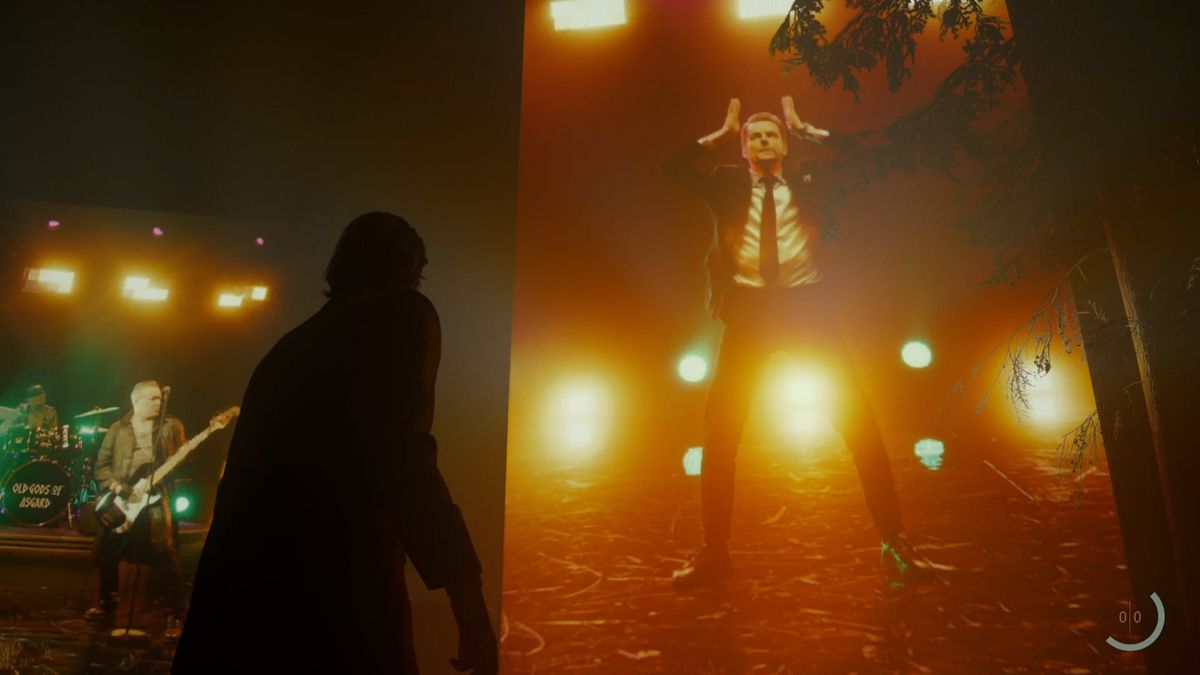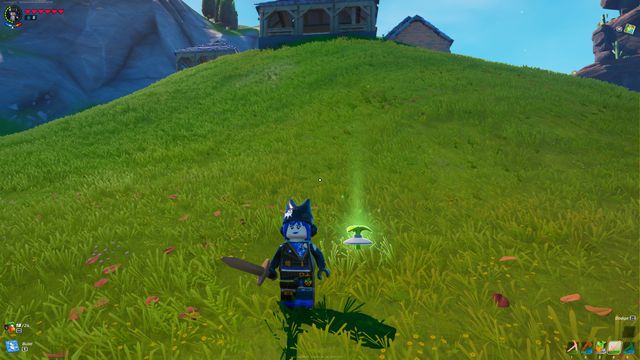Revolution Software is not a big developer. Right now, it’s six people, based in the historic English city of York, plus freelance contractors. It was a bit bigger in the mid-1990s, when Charles Cecil’s team released its biggest hit, Broken Sword: The Shadow of the Templars, a point-and-click adventure game about a lawyer and a journalist stumbling upon an ancient religious conspiracy, and a close cousin to LucasArts classics like Monkey Island. But the genre fell out of fashion, publishers lost interest, and at one point, Cecil had to let everyone go.
Thanks to the advent of smartphones, Kickstarter, and online storefronts, as well as the increasing influence of niche fan communities, Cecil has been able to slowly rebuild Revolution into something reminiscent of the 1980s cottage industry he once worked in. Sequels and reissues in the Broken Sword series have been key to that process, but the series has now been dormant for nearly a decade — the longest lull in its history.
That’s now set to change, with the announcement that a sixth Broken Sword game is in development, alongside a full remaster of Shadow of the Templars. Cecil meets me in London over coffee to introduce the two projects, which he describes as a “renaissance” for Broken Sword, and he’s proud to reveal that Revolution has been able to self-fund them. But there are limits to what this tiny indie studio can achieve.
Fans have long called for Shadow of the Templars to be released on modern platforms, but Cecil knew that would require a full remaster of its beautiful, but low-resolution, animated visuals. And that is a huge task: It comprises 30,000 hand-drawn sprites animating hand-painted backgrounds. It was simply too much to contemplate; Cecil estimates that each frame of an animated sprite would take an hour to draw. “30,000 times one hour, times, you know, £15 to £20 an hour, is an awful lot of money,” Cecil says.
So Revolution investigated whether AI could be trained to help update the distinctive look of the Broken Sword games without affecting the overall vibe. “What I wanted to do was to recreate this game that everyone remembered and loved, but not change it except to enhance it,” he says, noting the negative reaction to changes in the Monkey Island games’ art style. Early experiments with upscaling the backgrounds didn’t work out; luckily, Revolution still had the original line drawings by Hollywood animator Eoghan Cahill, so it had human artists work from those instead.
For the sprites, Revolution produced “a few hundred” by hand and took them to the University of York, where an AI research team used them to train a GAN (generative adversarial network). The result “wasn’t quite good enough,” Cecil says, but a tip from a Nvidia engineer about how to use AI to interpolate frames in between hand-drawn key frames prompted a breakthrough.
“Instead of taking an hour to do each one, it takes between 5 and 10 minutes to do each one,” Cecil says. “We’re training the model on our own sprites… What we’ve really focused on is the outlines and the detail in the body, because there’s no way that the hands and the head are going to [look right]. So we have to manually draw their hands and faces.” The hands and head are pasted on after, with animators taking care to flesh out facial expressions that the original art didn’t have enough detail to resolve.
:no_upscale()/cdn.vox-cdn.com/uploads/chorus_asset/file/24868371/broken_sword_shadow_of_the_templars_reforged_2.png)
“The ability to use AI on sprites is an absolute game changer,” Cecil says. “We just simply couldn’t afford to do it. Otherwise, it would be impossible. And you know, I share what reservations people have about AI. But in the case of sprites, it really is, you know, allowing really talented character artists and animators to take the original and mold it into something really special, rather than having to go through the drudgery of redrawing everything again.”
It has to be said, the end result, with dynamic shadows applied, looks fantastic — better, arguably, than the glimpse that Cecil offers of the sixth game, Broken Sword: Parzival’s Stone, which is being made in 3D in Unity. It’s the ideal of any remaster: the game as you remember it looking, not as it actually looked.
But Cecil is not above making a few changes to “some of the things, which, culturally, have always slightly worried me” about the 1996 game to make it “a little bit more culturally appropriate for 2023.” He cites the examples of a Syrian carpet seller character, changed to be less “stereotypically mean, he’s slightly more jovial,” and an awkward moment between the game’s pair of heroes, American patent lawyer George Stobbart and French journalist Nico Collard. “There’s another point where Nico is tied up, and George can kiss her when she’s tied up. And you know, that’s just a little bit strange. […] It’s just three or four very, very minor things. But, you know, the example of that character, I’d been embarrassed about it pretty much from the beginning. So it’s just wonderful to be able just to tweak it […] but without losing the core charm that existed.”
:no_upscale()/cdn.vox-cdn.com/uploads/chorus_asset/file/24868330/453591316.jpg)
If you’re unfamiliar with Broken Sword, the games’ plots — always involving Stobbart and Collard traveling the globe to unpick sinister yet academic conspiracies involving ancient artifacts and secret societies — might sound eerily similar to The Da Vinci Code and the other blockbusting airport novels of Dan Brown. “Our fans are absolutely convinced that a young Dan Brown must have played Broken Sword, because of the similarities. Now, I never make that claim myself, because his lawyers are much better paid than I can afford. OK, so I keep quiet on this, but I’m allowed to quote others,” chuckles Cecil, with a glint in his eye.
It sounds like he’s going to stop there, but Cecil — a chatty, affable, academic type in his early 60s — can’t help himself. He has a passion for early medieval European history, the stories of the Holy Grail, and the Christian sect of the Cathars, and Brown’s apparent dilettantism in the area gets his goat. He rips at length into Brown’s obsession with The Holy Blood and the Holy Grail, a popular 1980s work of speculative history that posits that Jesus had children with Mary Magdalene, creating a bloodline of southern French kings defended by a secret society called the Priory of Sion. Cecil describes this very popular conspiracy theory as “absolutely crazy,” “insane,” “complete lunacy,” and “a load of nonsense.”
Once, on holiday in France, Cecil and his wife happened to bump into Jean-Luc Chaumeil, an author who had interviewed the supposed Priory of Sion grandmaster Pierre Plantard (“a nasty little antisemite”) and exposed him as a fraud in the 1970s. “But his voice has been drowned out by this sort of cacophony of people who found Holy Blood and the Holy Grail so compelling.” Including Brown, of course. “At the beginning, Dan Brown says, ‘Fact: There is an organization called the Priory of Sion.’ No, Dan, that is not true. That is just nonsense. Sorry.”
Not that Cecil minds exploring the gray area between history and legend himself. In fact, he loves it. His conversation is full of wild, historical tangents and funny, personable anecdotes; I’ve never seen so many snaps from family holidays in the south of France during a game presentation before. Laying out the setting for the new game, Parzival’s Stone, Cecil unexpectedly brings up a selfie he took with the cult horror movie director Richard Stanley. Hang on, what?
It turns out that Stanley is also an enthusiast of Cathar and Grail history, and lives in Montségur in the French Pyrenees, which was once the site of a Cathar fort. After watching a TV documentary Stanley made about Otto Rahn — a German Grail historian in the 1930s who ended up being recruited by the occult-obsessed Heinrich Himmler into the SS, despite being “both gay and half-Jewish” — Cecil made contact with the South African director. They met up in Montségur and Stanley led him on a strange expedition into some supposed secret Cathar caves in the hills. Cecil met a friend of Stanley’s who called himself “Sorcerer of the River of Colors,” and the way was opened for them into the caves by a witch. He shows me a smiling selfie of himself in a cave. “There’s a ring of fire — which you can’t see in this photo, I should have taken it — that was created by a witch. And she was just to the left here. I should have taken her photograph.”
:no_upscale()/cdn.vox-cdn.com/uploads/chorus_asset/file/24860190/Broken_Sword_Parzivals_Stone_Screen02.png)
This is all making less and less sense, but Cecil plows on, producing some small black stones from his pocket which, when wetted and rubbed together, produce a red liquid. “Grail stones! They’re very rare, and you won’t find anything about them on the internet,” Cecil claims, improbably. Rahn, it turns out, was a student of one of the earliest sources for the Grail myth, Wolfram von Eschenbach, who posited that the Grail was not a cup but a bleeding stone.
“So I really do think that so much of this is nonsense,” Cecil says. “But I do love the idea of the Grail being Wolfram von Eschenbach’s version, which is this bleeding stone.” These are the stories that Broken Sword: Parzival’s Stone will be based on, and the brief section Cecil shows me features George exploring the village of Montségur.
There’s more — much, much more. Cecil gives me a brief rundown of Cathar history, involving Mary Magdalene’s suppressed gospel giving rise to the Gnostic and then Cathar movements; the Cathars’ crusade against corruption in the Church; and the Church’s crusade against the Cathars, culminating in 10,000 crusaders laying siege to 100 Cathars in Montségur for a decade. He shows me a photo of his son standing next to what he claims is a trebuchet ball from that siege, 800 years ago. “I mean, it’s all just brilliant stuff. Absolutely brilliant stuff,” he enthuses.
Back to Otto Rahn. “And so basically what [Parzival’s Stone] is doing is following this idea of, you know, the Nazi treasure hunt,” Cecil says. “You know, what is it that made the stone special: The Cathars believed they could look into the past and the future, if they were the guardians of the Grail. So to me, this is perfect, because it’s got the gameplay of, you know, an authentic history. One of the things that we’re determined to do is not just write a point-and-click adventure; we still want the point-and-click elements, but also the ability to play around with time, all of which fits perfectly into this history.”
This last bit — a vague hint at some kind of time-manipulation mechanic, or maybe time-skipping narrative — is about the only new detail I get about the sixth Broken Sword game during our chat. I’ve sat talking with Cecil for over an hour and it’s mostly been rumor, speculation, anecdotes, and jokes — which, when you think about it, couldn’t be more perfectly fitting for the return of Broken Sword.




